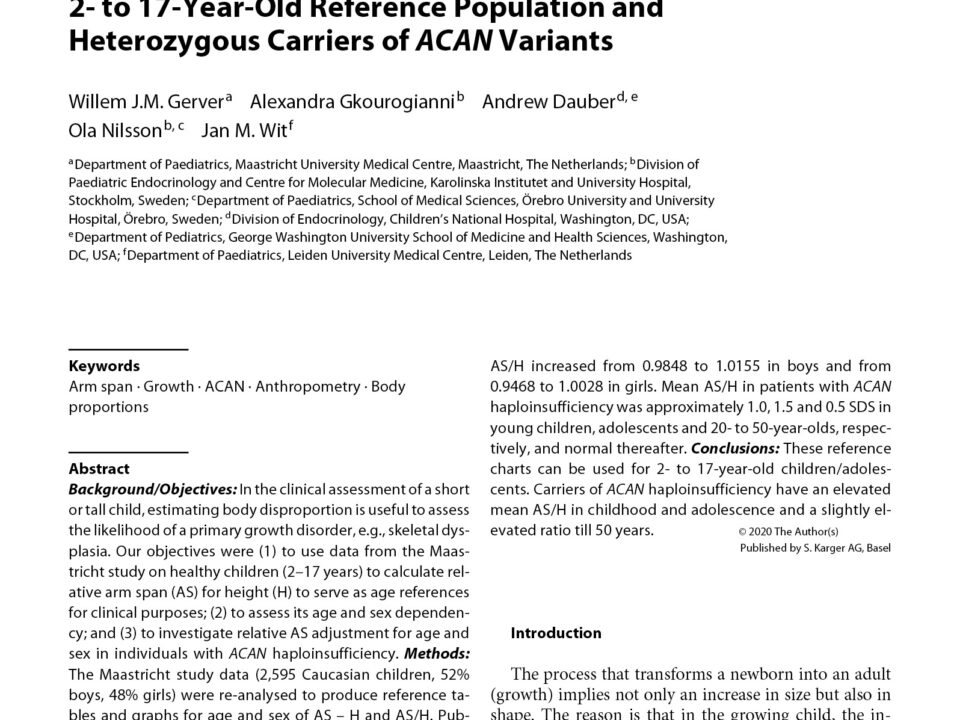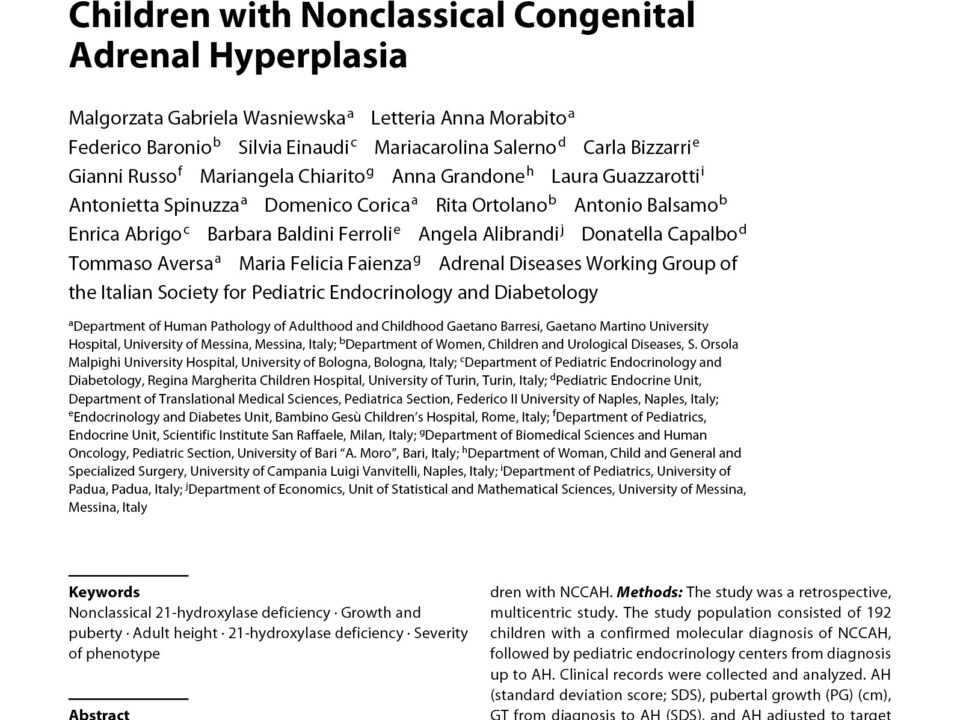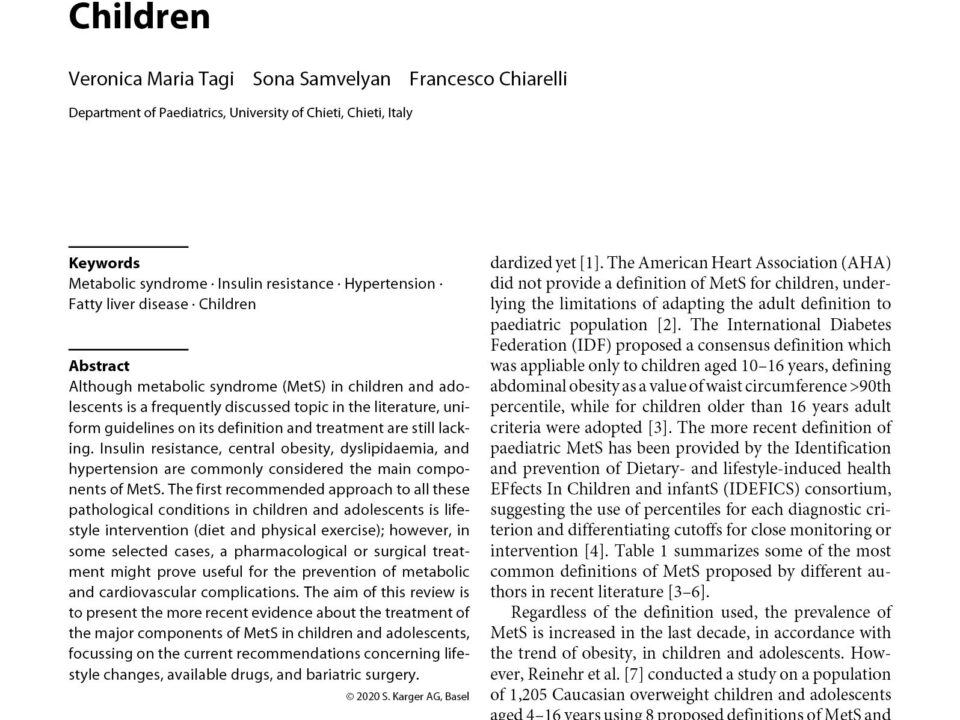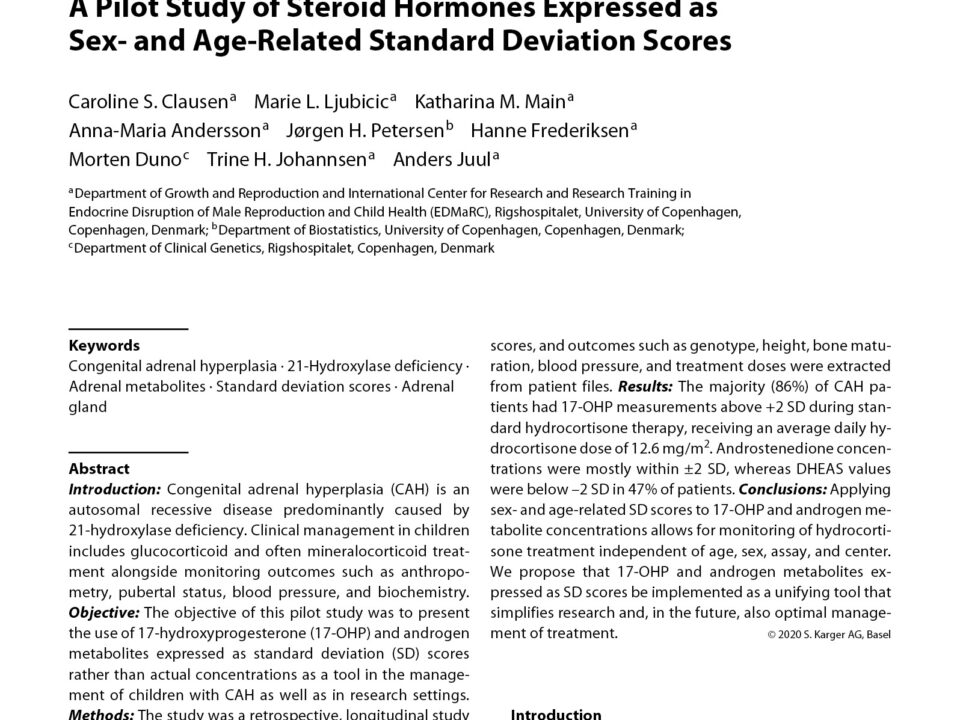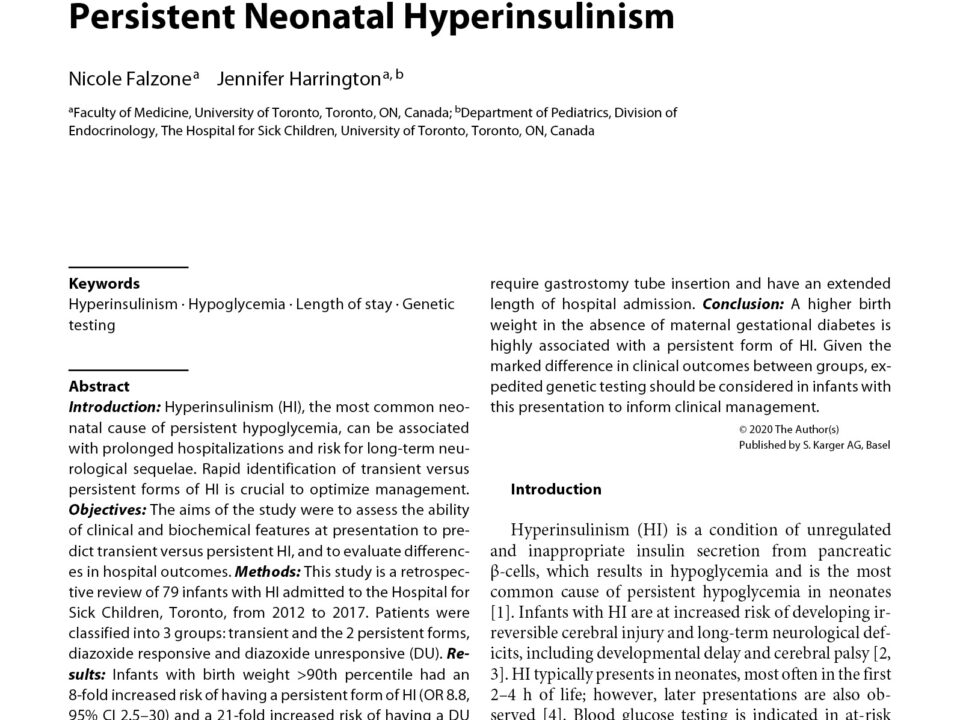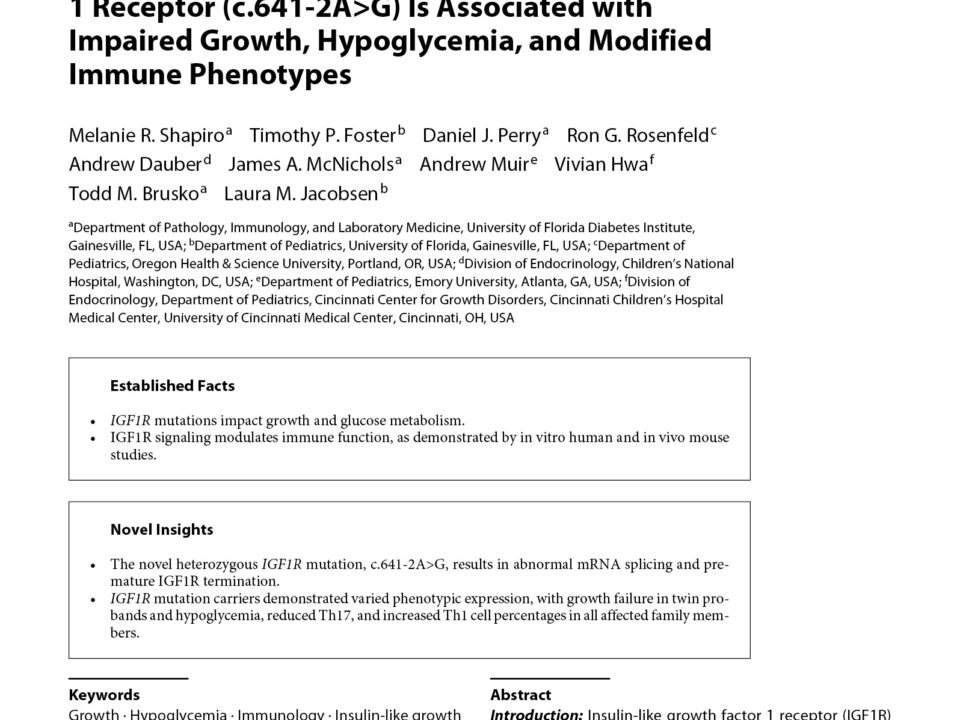December 13, 2022
Introduction: Omnitrope® was approved as a biosimilar recombinant human growth hormone (rhGH) in 2006. Objective: The purpose of this work was to evaluate the long-term safety and effectiveness of Omnitrope® in PATRO Children – an ongoing, international, longitudinal, non-interventional study in children who require rhGH treatment. Methods: The study population includes infants, children, and adolescents receiving Omnitrope®. Adverse events (AEs) are monitored for safety and rhGH effectiveness is evaluated by calculation of the height standard deviation score (HSDS), height velocity (HV), and HVSDS using height measurements and country-specific references. Results: As of November 2017, 6,009 patients from 298 centers across 14 countries were enrolled in PATRO Children. Overall, 57.7% of patients had growth hormone deficiency (GHD), 25.8% were born small for gestational age (SGA), and 4.8% had Turner syndrome (TS). In total, 84.1% were rhGH treatment naïve at study entry. The mean duration of Omnitrope® treatment in the study was 36.1 months (range 0–133.7). Overall, 10,360 AEs were reported in 2,750 patients (45.8%). Treatment-related AEs were reported in 396 patients (6.6%; 550 events), and serious AEs (SAE) in 636 patients (10.6%; 1,191 events); 50 SAEs in 37 patients (0.6%) were considered treatment related. Following 5 years of therapy in patients who were rhGH treatment naïve at study entry, improvement from baseline in mean HSDS was +1.85 in GHD, +1.76 in SGA, and +1.0 in TS patients. In total, 912 (17.9%) patients reached adult height (n = 577 GHD, n = 236 SGA, n = 62 TS). Conclusions: This analysis of PATRO Children indicates that biosimilar rhGH is well tolerated and effective in real-world clinical practice.
December 13, 2022
Background/Objectives: In the clinical assessment of a short or tall child, estimating body disproportion is useful to assess the likelihood of a primary growth disorder, e.g., skeletal dysplasia. Our objectives were (1) to use data from the Maastricht study on healthy children (2–17 years) to calculate relative arm span (AS) for height (H) to serve as age references for clinical purposes; (2) to assess its age and sex dependency; and (3) to investigate relative AS adjustment for age and sex in individuals with ACAN haploinsufficiency. Methods: The Maastricht study data (2,595 Caucasian children, 52% boys, 48% girls) were re-analysed to produce reference tables and graphs for age and sex of AS – H and AS/H. Published information on AS/H in Europeans was used as reference data for adults. Relative AS from 33 patients with ACAN haploinsufficiency were plotted against reference data and expressed as standard deviation score (SDS) for age and sex. Results: Mean AS – H from 2 to 17 years increased from –1.2 to +1.5 cm in boys and from –4.8 to +1.6 cm in girls. Mean AS/H increased from 0.9848 to 1.0155 in boys and from 0.9468 to 1.0028 in girls. Mean AS/H in patients with ACAN haploinsufficiency was approximately 1.0, 1.5 and 0.5 SDS in young children, adolescents and 20- to 50-year-olds, respectively, and normal thereafter. Conclusions: These reference charts can be used for 2- to 17-year-old children/adolescents. Carriers of ACAN haploinsufficiency have an elevated mean AS/H in childhood and adolescence and a slightly elevated ratio till 50 years.
December 13, 2022
Background: Children with nonclassical congenital adrenal hyperplasia (NCCAH) often present increased growth velocity secondary to elevation of adrenal androgens that accelerates bone maturation and might compromise adult height (AH). Objective: The aim of the study was to analyze prognostic factors affecting growth trajectory (GT) and AH in children with NCCAH. Methods: The study was a retrospective, multicentric study. The study population consisted of 192 children with a confirmed molecular diagnosis of NCCAH, followed by pediatric endocrinology centers from diagnosis up to AH. Clinical records were collected and analyzed. AH (standard deviation score; SDS), pubertal growth (PG) (cm), GT from diagnosis to AH (SDS), and AH adjusted to target height (TH) (AH-TH SDS) were evaluated as outcome indicators using stepwise linear regression models. Results: The stepwise linear regression analysis showed that AH and AH-TH were significantly related to chronological age (CA) (p = 0.008 and 0.016), bone age (BA)/CA ratio (p = 0.004 and 0.001), height (H) (p < 0.001 for both parameters) at NCCAH diagnosis, and TH (p = 0.013 and <0.001). PG was higher in males than in females (22.59 ± 5.74 vs. 20.72 ± 17.4 cm, p = 0.002), as physiologically observed, and was positively related to height (p = 0.027), negatively to BMI (p = 0.001) and BA/CA ratio (p = 0.001) at NCCAH diagnosis. Gender, genotype, biochemical data, and hydrocortisone treatment did not significantly impair height outcomes of these NCCAH children. Conclusions: The results of this study suggest that AH and GT of NCCAH patients are mainly affected by the severity of phenotype (CA, BA/CA ratio, and H) at the time of diagnosis.
December 13, 2022
Although metabolic syndrome (MetS) in children and adolescents is a frequently discussed topic in the literature, uniform guidelines on its definition and treatment are still lacking. Insulin resistance, central obesity, dyslipidaemia, and hypertension are commonly considered the main components of MetS. The first recommended approach to all these pathological conditions in children and adolescents is lifestyle intervention (diet and physical exercise); however, in some selected cases, a pharmacological or surgical treatment might prove useful for the prevention of metabolic and cardiovascular complications. The aim of this review is to present the more recent evidence about the treatment of the major components of MetS in children and adolescents, focussing on the current recommendations concerning lifestyle changes, available drugs, and bariatric surgery.
December 13, 2022
Patients affected by pseudohypoparathyroidism (PHP) or related disorders are characterized by physical findings that may include brachydactyly, a short stature, a stocky build, early-onset obesity, ectopic ossifications, and neurodevelopmental deficits, as well as hormonal resistance most prominently to parathyroid hormone (PTH). In addition to these alterations, patients may develop other hormonal resistances, leading to overt or subclinical hypothyroidism, hypogonadism and growth hormone (GH) deficiency, impaired growth without measurable evidence for hormonal abnormalities, type 2 diabetes, and skeletal issues with potentially severe limitation of mobility. PHP and related disorders are primarily clinical diagnoses. Given the variability of the clinical, radiological, and biochemical presentation, establishment of the molecular diagnosis is of critical importance for patients. It facilitates management, including prevention of complications, screening and treatment of endocrine deficits, supportive measures, and appropriate genetic counselling. Based on the first international consensus statement for these disorders, this article provides an updated and ready-to-use tool to help physicians and patients outlining relevant interventions and their timing. A life-long coordinated and multidisciplinary approach is recommended, starting as far as possible in early infancy and continuing throughout adulthood with an appropriate and timely transition from pediatric to adult care.
December 13, 2022
December 13, 2022
Background: Pediatric endocrine practices had to rapidly transition to telemedicine care at the onset of the novel coronavirus disease 2019 (COVID-19) pandemic. For many, it was an abrupt introduction to providing virtual healthcare, with concerns related to quality of patient care, patient privacy, productivity, and compensation, as workflows had to change. Summary: The review summarizes the common adaptations for telemedicine during the pandemic with respect to the practice of pediatric endocrinology and discusses the benefits and potential barriers to telemedicine. Key Messages: With adjustments to practice, telemedicine has allowed providers to deliver care to their patients during the COVID-19 pandemic. The broader implementation of telemedicine in pediatric endocrinology practice has the potential for expanding patient access. Research assessing the impact of telemedicine on patient care outcomes in those with pediatric endocrinology conditions will be necessary to justify its continued use beyond the COVID-19 pandemic.
December 13, 2022
Introduction: Hyperinsulinism (HI), the most common neonatal cause of persistent hypoglycemia, can be associated with prolonged hospitalizations and risk for long-term neurological sequelae. Rapid identification of transient versus persistent forms of HI is crucial to optimize management. Objectives: The aims of the study were to assess the ability of clinical and biochemical features at presentation to predict transient versus persistent HI, and to evaluate differences in hospital outcomes. Methods: This study is a retrospective review of 79 infants with HI admitted to the Hospital for Sick Children, Toronto, from 2012 to 2017. Patients were classified into 3 groups: transient and the 2 persistent forms, diazoxide responsive and diazoxide unresponsive (DU). Results: Infants with birth weight >90th percentile had an 8-fold increased risk of having a persistent form of HI (OR 8.8, 95% CI 2.5–30) and a 21-fold increased risk of having a DU form of HI (OR 21.1, 95% CI 4.9–91.8). The majority of children with transient HI and a birth weight >90th percentile were born to mothers with gestational diabetes. There were no other useful clinical or biochemical presenting features that differentiated the groups. There were significant differences in outcome measures, with the DU children more likely to require gastrostomy tube insertion and have an extended length of hospital admission. Conclusion: A higher birth weight in the absence of maternal gestational diabetes is highly associated with a persistent form of HI. Given the marked difference in clinical outcomes between groups, expedited genetic testing should be considered in infants with this presentation to inform clinical management.
December 13, 2022
Growth and glucose homeostasis are intricately regulated by hormonal insulin and insulin-like growth factor (IGF) signaling via tyrosine kinase receptors, including the IGF1 receptor (IGF1R) [1]. The IGF1R gene is found on chromosome 15q26.3 and consists of 21 exons, encoding for an (αβ)2 homodimer with homology to the insulin receptor (IR) [2]. Mutations in IGF1R have been reported to affect ligand binding and/or decrease surface IGF1R expression [2]. Prior reports of IGF1R mutations are commonly heterozygous [3-15], with only 2 compound heterozygous [16, 17] and 2 hypomorphic homozygous mutations [14, 18] reported to date. Homozygous loss-of-function mutations are likely lethal, as observed in mouse studies [19].
